
Marine Corps Air Station Yuma or MCAS Yuma is a United States Marine Corps air station in Arizona. It is the home of multiple squadrons of F-35B Lightning IIs of the 3rd Marine Aircraft Wing, Marine Aviation Weapons and Tactics Squadron 1 (MAWTS-1), Marine Operational Test and Evaluation Squadron 1 (VMX-1) and Marine Fighter Training Squadron 401 (VMFT-401), an air combat adversary squadron of the 4th Marine Aircraft Wing of the Marine Corps Reserve. It is a designated Superfund site due to a number of soil and groundwater contaminants, including asbestos.

Marine Corps Air Station Iwakuni or MCAS Iwakuni is a United States Marine Corps air station located in the Nishiki river delta, 1.3 NM southeast of Iwakuni Station in the city of Iwakuni, Yamaguchi Prefecture, Japan.

Marine Corps Air Station Miramar, formerly Naval Auxiliary Air Station (NAAS) Miramar and Naval Air Station (NAS) Miramar, is a United States Marine Corps installation that is home to the 3rd Marine Aircraft Wing, which is the aviation element of the 1st Marine Expeditionary Force. It is located in Miramar, San Diego, California, about 14 miles (23 km) north of Downtown San Diego.

Marine Fighter Attack Squadron 232 (VMFA-232) is a United States Marine Corps F/A-18 Hornet squadron. Nicknamed the "Red Devils", the squadron is based at Marine Corps Air Station Miramar, California and falls under the command of Marine Aircraft Group 11 (MAG-11) and the 3rd Marine Aircraft Wing. The Red Devils are the oldest and most decorated fighter squadron in the Marine Corps.
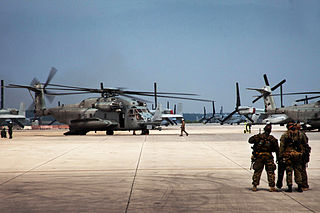
Marine Corps Air Station New River is a United States Marine Corps helicopter and tilt-rotor base in Jacksonville, North Carolina, in the eastern part of the state. In 1972, the airfield was named McCutcheon Field for General Keith B. McCutcheon, one of the fathers of Marine Corps helicopter aviation. Near Marine Corps Base Camp Lejeune, it shares some facilities with Camp Geiger.

Pitt–Greenville Airport is a public airport located two miles (3 km) north of the central business district of Greenville, North Carolina, and East Carolina University. The airport covers 872 acres (353 ha) and has two runways. It is mostly used for general aviation but is also served by American Airlines, which operates commuter service to Charlotte. The airport manager is Kim W. Hopper.

Gillespie Field is a county-owned public towered airport 11.5 miles northeast of downtown San Diego, in El Cajon, San Diego County, California, United States.
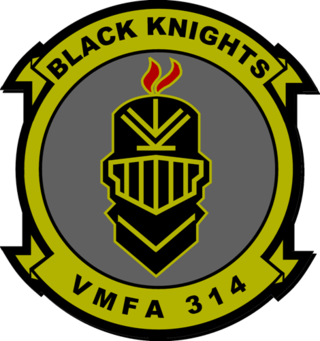
Marine Fighter Attack Squadron 314 (VMFA-314) is a United States Marine Corps F-35C Lightning II squadron. The squadron, known as the "Black Knights", is based at Marine Corps Air Station Miramar, California and falls under the command of Marine Aircraft Group 11 (MAG-11) and the 3rd Marine Aircraft Wing, but deploys with the US Navy's Carrier Air Wing Nine (NG).
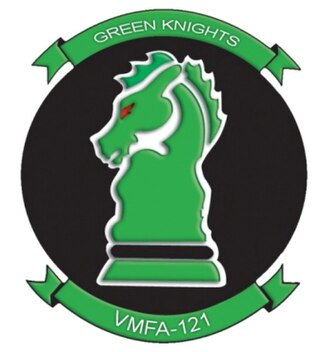
Marine Fighter Attack Squadron 121 (VMFA-121), also known as the "Green Knights", is a United States Marine Corps aircraft squadron operating the F-35B Lightning II. The squadron is based at Marine Corps Air Station Iwakuni, Japan and falls under the command of Marine Aircraft Group 12 (MAG-12) and the 1st Marine Aircraft Wing. Their tail code is VK and their radio call sign is "Combat".
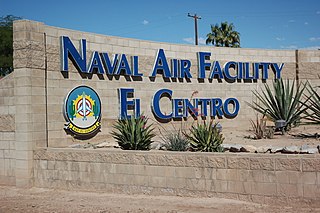
Naval Air Facility El Centro or NAF El Centro is a United States Navy Naval Air Facility located approximately six miles (10 km) northwest of El Centro, in Imperial County, California. NAF El Centro is under the jurisdiction of Navy Region Southwest and serves both as temporary homeport to military units conducting air-to-air and bombing training, and as the winter training home of the Blue Angels aerobatics display team.
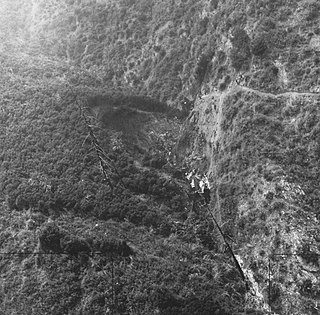
Hughes Airwest Flight 706 was a regularly scheduled flight operated by American domestic airline Hughes Airwest from Los Angeles, California to Seattle, Washington, with several intermediate stops. On Sunday, June 6, 1971, the McDonnell Douglas DC-9 serving as Flight 706 departed Los Angeles just after 6 p.m. en route to Seattle as a McDonnell Douglas F-4 Phantom II of the United States Marine Corps was approaching Marine Corps Air Station El Toro near Irvine at the end of a flight from Naval Air Station Fallon in Nevada. The two aircraft collided in midair over the San Gabriel Mountains near Duarte, killing all 49 aboard the DC-9 and the F-4 pilot; the F-4 radar intercept officer ejected and survived.

Marine Corps Air Station Camp Pendleton or MCAS Camp Pendleton is a United States Marine Corps airfield located within Marine Corps Base Camp Pendleton, California. It was commissioned in 1942 and is currently home to Marine Aircraft Group 39. The airfield is also known as Munn Field in honor of Lieutenant General John C. "Toby" Munn, the first Marine aviator to serve as the Commanding General of Marine Corps Base Camp Pendleton.
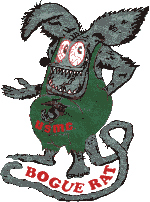
Marine Corps Auxiliary Landing Field Bogue, also known as Bogue Field, is an 875-acre (3.54 km2) landing field located on Bogue Sound that serves as a Marine Corps’ East Coast site for Field Carrier Landing Practice (FCLP). It is a sub facility of MCAS Cherry Point in Havelock in Craven County and one of three USMC facilities in Carteret County. The others include Atlantic Airfield, a Cherry Point sub installation which is sparsely manned and Radio Island shipping terminal, between Morehead City and Beaufort, which falls under control of Camp Lejeune, though it is only manned during active military operations. Another USMC facility, Oak Grove Airfield, near Pollocksville in Jones County, in also controlled by Cherry Point and in rarely manned unless training is conducted there. By Bogue Field being available for performing many of these landings at night, pilots simulate landing on an aircraft carrier or an amphibious assault ship, which provides the force with the means to forward deploy its aviation assets in order to have a more readily accessible aviation punch for the Marine Air Ground Task Force (MAGTF) commander on the battlefield.

Naval Air Station Olathe is a former United States Navy base located in Gardner, Kansas. On its grounds at one point was Olathe Air Force Station. After it was closed, it was redeveloped into New Century AirCenter.

The Flying Leatherneck Aviation Museum is a United States Marine Corps aviation museum currently located at Marine Corps Air Station Miramar, San Diego, California. The museum contains exhibits and artifacts relating to the history and legacy of United States Marine Corps Aviation. The outdoor exhibits include 31 historical aircraft, multiple military vehicles and equipment. Indoor exhibits feature photographs, artifacts and artwork from the early days of aviation to the present.

Marine Corps Air Station Santa Barbara was a United States Marine Corps air station that was located in Goleta, California 70 miles (113 km) north of Los Angeles during World War II. It was also known as the Goleta Air Station in the 1940s. Commissioned on 4 December 1942, the air station consisted of an airfield that had been built into the Goleta Slough and served as a training base for numerous squadrons before they deployed to support combat operations in the Pacific Theater. Later in the war, the station would serve as home to Marine squadrons that were trained to operate from aircraft carriers providing close air support for their fellow Marines on the ground. Following the surrender of Japan and the subsequent drawdown of forces that ensued, the air station closed its doors in 1946 and today its property is home to the Santa Barbara Municipal Airport and the campus of the University of California, Santa Barbara.
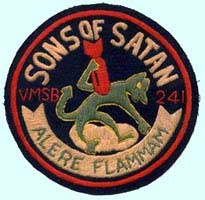
Marine Attack Squadron 241 (VMA-241) was an aircraft squadron of the United States Marine Corps, known as the "Sons of Satan". The squadron was commissioned during World War II and took part in the Battle of Midway, sustaining 75% losses. It was extensively involved in combat while providing close air support during the 1944–1945 Philippines Campaign. The squadron, equipped with A-4 Skyhawk light attack aircraft, became part of the Marine Forces Reserve, based at Naval Air Station Los Alamitos, California, from 1946 until the 1960s.

Naval Air Station Los Alamitos Naval Outlying Landing Fields were a set airfield near Naval Air Station Los Alamitos to support the training of US Navy pilots during World War 2. The support airfields are called Naval Outlying Landing Field (NOLF). For the war, many new trained pilots were needed. The Naval Outlying Landing Fields provided a place for pilots to practice landing and take off without other air traffic. The remotes sites offered flight training without distractions. Most of the new pilots departed to the Pacific War after training. The Outlying Landing Fields had little or no support facilities. Naval Air Station Los Alamitos opened in 1942 and was transferred to the US Army in 1977 as Los Alamitos Army Airfield. Most of the Outlying fields closed in 1945, having completed the role of training new pilots. To open the needed Outlying Landing Fields quickly, the Navy took over local crop dusting and barnstorming airfields. Naval Air Station Los Alamitos was also called Los Alamitos Naval Reserve Air Base. During the war Marine Corps Air Station El Toro also used the outlying Landing Field. The Timm N2T Tutor was the most common plane used for training on the outlying landing fields.

Marine Fighting Squadron 471 (VMF-471) was a short-lived fighter squadron of the United States Marine Corps during World War II. The squadron served as a Fleet Replacement Squadron tasked with training new naval aviators to fly the Vought F4U Corsair. The squadron did not participate in combat action during the war and was decommissioned after approximately 16 months of service on 10 September 1945. No other Marine Corps squadron has carried VMF-471's lineage and honors since that time.
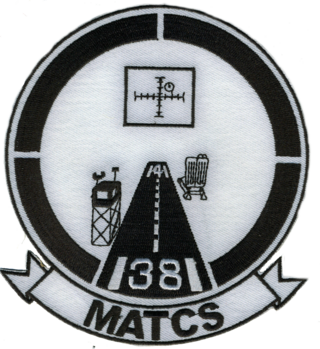
Marine Air Traffic Control Squadron 38 (MATCS-38) was a United States Marine Corps aviation command and control squadron responsible for providing continuous, all-weather air traffic control services for the 3rd Marine Aircraft Wing throughout the West Coast of the United States. MATCS-38 was formed by consolidating four, regionally aligned Marine Air Traffic Control Units under one flag to better integrate them with the Marine Air Command and Control System. The squadron was headquartered at Marine Corps Air Station Tustin, California and fell under the command of Marine Air Control Group 38. MATCS-38 was decommissioned in September 1994 and its air traffic control function were transferred to Marine Air Control Squadron 1. Since its decommissioning, no other squadron has carried the lineage and honors of MATCS-38.
























